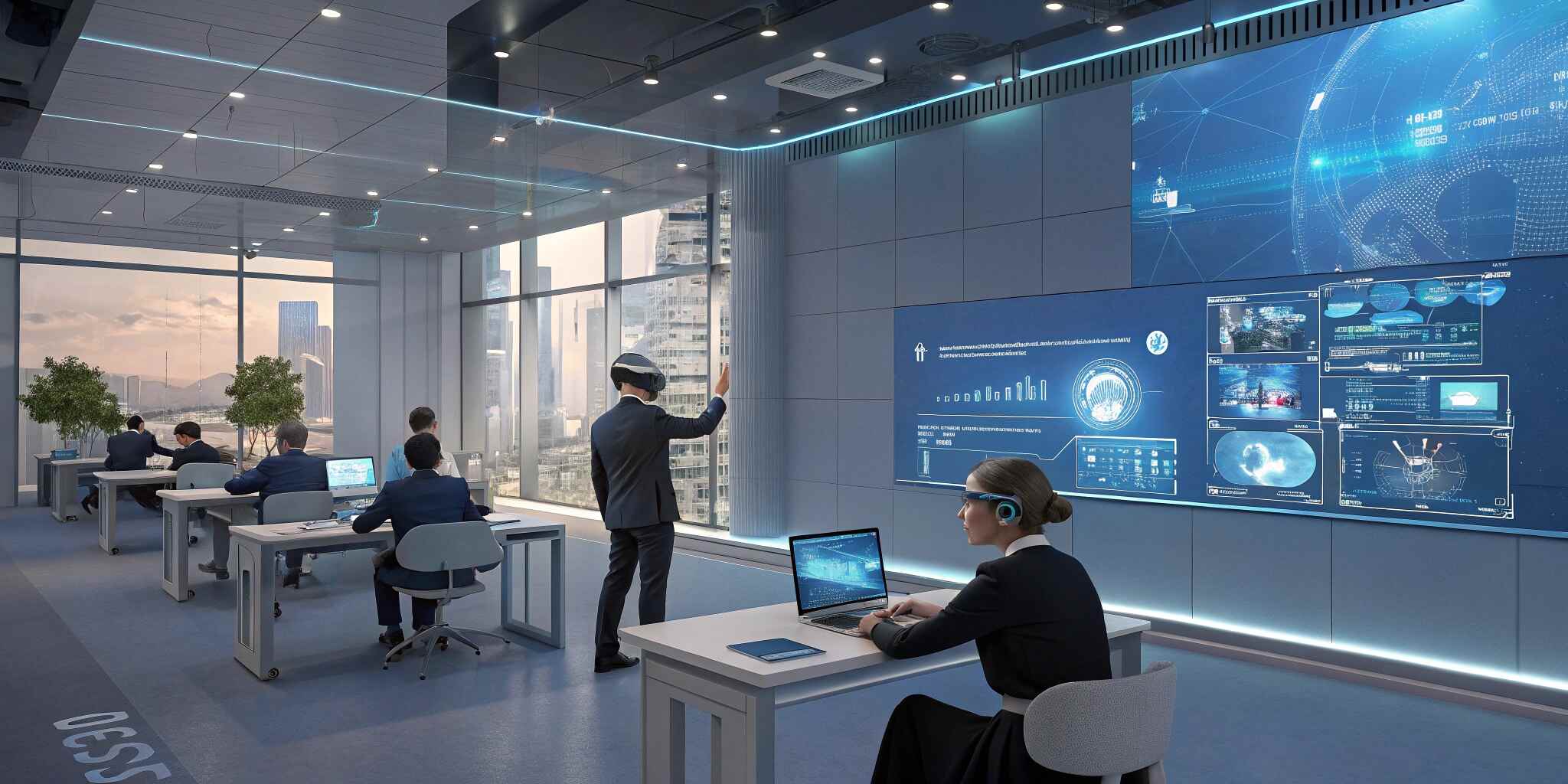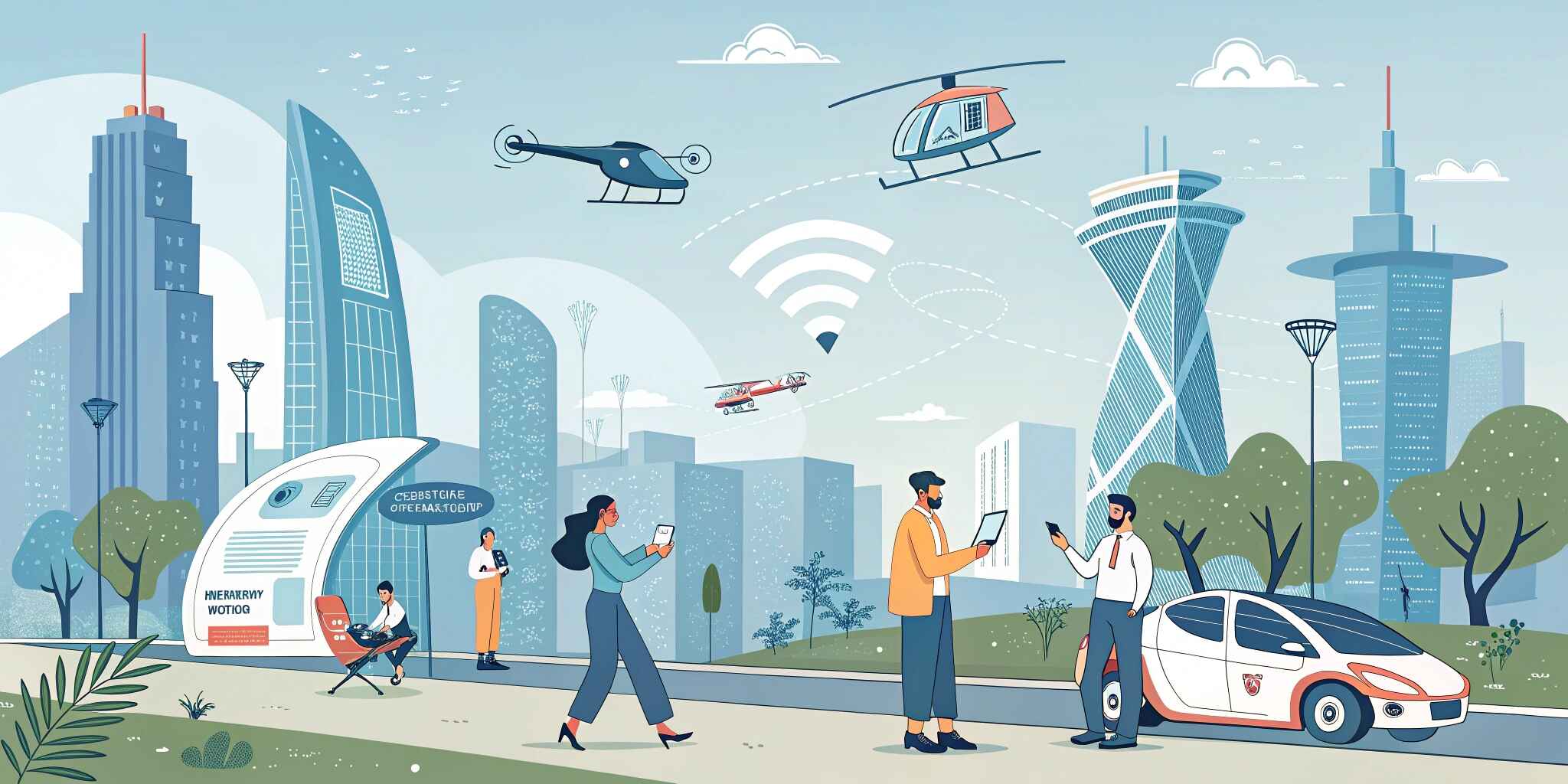The concept of the Metaverse—a fully immersive, interactive digital world—has rapidly evolved from science fiction into a tangible reality that’s reshaping industries. Fueled by advancements in virtual reality (VR), augmented reality (AR), blockchain, and AI, the Metaverse is transforming how businesses operate and how educational institutions deliver learning. In both business and education, it offers limitless opportunities for engagement, collaboration, and innovation.
Understanding the Metaverse
The Metaverse is a collective virtual space where users interact with digital environments and each other through 3D avatars. It’s not a single platform but a network of interconnected virtual worlds that mimic or enhance real-world experiences. Powered by extended reality (XR) technologies and supported by cloud computing, 5G, and AI-driven ecosystems, the Metaverse enables real-time, immersive participation on a global scale.
The Metaverse in Business: A New Dimension of Collaboration
Businesses worldwide are embracing the Metaverse to redefine work culture, customer engagement, and operations. It enables organizations to move beyond traditional boundaries, offering an ecosystem that blends virtual and physical realities.
- Virtual Workspaces and Collaboration
- The rise of remote work has accelerated the adoption of virtual offices. Through Metaverse platforms like Meta Horizon Workrooms or Microsoft Mesh, teams can meet in 3D environments, share virtual whiteboards, and collaborate seamlessly—bringing human presence to digital interactions.
- Immersive Customer Experiences
- Companies are creating digital storefronts and product demos that customers can explore in real time. For example, fashion brands use VR to host virtual fashion shows, while real estate firms offer 3D property tours that replicate physical experiences.
- Training and Skill Development
- The Metaverse offers immersive simulations for employee training. From machinery operation to customer service scenarios, interactive virtual environments allow teams to learn safely and effectively. Industries like manufacturing, healthcare, and aviation are already reaping the benefits.
- Digital Twins and Product Innovation
- Businesses use digital twins—virtual replicas of physical assets—to test, predict, and improve products. This minimizes errors, reduces costs, and speeds up innovation cycles in industries such as automotive and engineering.
- Virtual Events and Conferences
- Instead of flat video meetings, companies now host interactive conferences and expos in 3D venues, enhancing audience engagement and networking opportunities.
The Metaverse in Education: Learning Without Limits
In education, the Metaverse is revolutionizing traditional learning models by offering students immersive, interactive experiences that extend beyond classroom walls.
- Immersive Classrooms
- Instead of simply reading about history or science, students can virtually visit historical sites, explore human anatomy in 3D, or conduct chemistry experiments in safe digital labs. These experiences improve retention and make learning more engaging.
- Global Collaboration and Inclusion
- The Metaverse breaks geographical barriers, allowing students from different countries to learn together in shared virtual environments. It promotes cultural exchange and collaboration, essential skills in a globalized world.
- Skill-Based and Experiential Learning
- Through simulation-based training, students can practice real-world skills—such as engineering, surgery, or design—without the constraints of physical resources. Universities are integrating Metaverse-based modules to enhance technical education.
- Customized Learning Paths
- AI integration within Metaverse platforms personalizes learning experiences, adjusting difficulty levels and content based on each student’s performance and interests.
- Virtual Campuses and Events
- Educational institutions are hosting virtual convocations, career fairs, and student orientations in 3D environments, ensuring inclusivity and engagement even in remote settings.
Challenges and Considerations
While the Metaverse holds immense promise, it’s not without challenges. Data privacy, digital security, and high infrastructure costs remain major concerns. Moreover, access to advanced hardware like VR headsets can create digital divides. To overcome these barriers, institutions and businesses must invest in scalable cloud solutions, inclusive design, and cybersecurity frameworks.
The Future of the Metaverse
By 2030, experts predict that the Metaverse will be as integral to society as the internet is today. In business, it will fuel the rise of virtual economies, AI-driven marketing, and smart supply chains. In education, it will become a cornerstone of lifelong learning, blending immersive experiences with real-world applicability.
The Metaverse is not replacing the real world—it’s enhancing it. By combining digital creativity with technological innovation, it enables people to connect, learn, and grow in ways never before possible.
Conclusion
The Metaverse represents the next evolution in digital interaction—where business efficiency meets educational empowerment. Its integration into corporate and academic ecosystems is setting new standards for collaboration, engagement, and innovation. As we step into this new frontier, organizations that embrace the Metaverse early will gain a competitive edge, unlocking a future where imagination meets reality.


